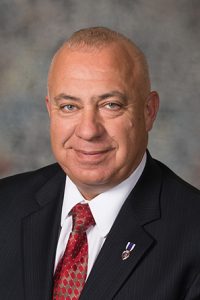Bounty program for pheasant nest predators considered
The state would establish a bounty program intended to increase the number of ring-necked pheasants in Nebraska under a bill heard Feb. 8 by the Natural Resources Committee.

Under LB400, introduced by Sen. Tom Brewer of Gordon, the state Game and Parks Commission would pay a $10 bounty on each badger, coyote, opossum, raccoon, red fox and striped skunk harvested from March 1 to July 1 each year. The commission could pay a maximum of 50,000 bounties per year.
Individuals 16 and older could participate in the program if they have an unexpired fur harvesting permit and habitat stamp.
Brewer said the game birds, once plentiful across Nebraska, have become difficult to find in recent years as their numbers have dwindled. Without a wild pheasant population, he said, the state is missing out on economic activity derived from pheasant hunting.
John Ross, a hunter and hunter educator, testified in support of the bill. He attributed declining pheasant populations to habitat loss and an increase in predator numbers caused by a drop in fur prices.
“Predator control should be used as a management tool,” Ross said. “That would help balance the number of predators to the number of prey in the habitat.”
Spike Eickholt also testified in support, saying the proposed bounty program could be part of the state’s approach to reversing the decline in pheasant numbers. He said the lack of birds makes it difficult to interest young people in hunting.
“You’ve got a whole generation that is not experiencing this sport,” Eickholt said.
Alicia Hardin testified in opposition to LB400 on behalf of the state Game and Parks Commission. She said suitable habitat and weather conditions during brooding and nesting times — not predator numbers — are the most important factors in pheasant survival.
Most studies have found that removing predators rarely succeeds in increasing the number of ground nesting birds, Hardin said.
“Dollars spent on habitat would have much longer-lasting impacts than paying for bounties,” she said.
Also testifying in opposition was Drew Larsen of Pheasants Forever. A bounty program likely would not make a significant impact on predator numbers, he said, as Nebraska already has a furbearer trapping season.
Larsen said Pheasants Forever is concerned that the proposed bounty program inadvertently would divert funding from existing habitat improvement programs that have been proven to increase pheasant populations.
Katie Torpy of the Nature Conservancy also opposed the bill, saying land use change is “far and away” the biggest cause of declining pheasant numbers. Fragmentation of Nebraska’s grasslands and encroachment of species such as eastern redcedar have left less habitat for pheasants while increasing habitat for predators, she said.
“High annual losses of pheasants to predators should not be misconstrued to mean that predation is the driver when the cause of those predator numbers [is] equally driven by habitat structural change,” Torpy said.
Additionally, she said, lawmakers should consider omitting coyotes from any bounty program because their suppression has been shown to have negative effects on a number of other species.
The committee took no immediate action on LB400.

